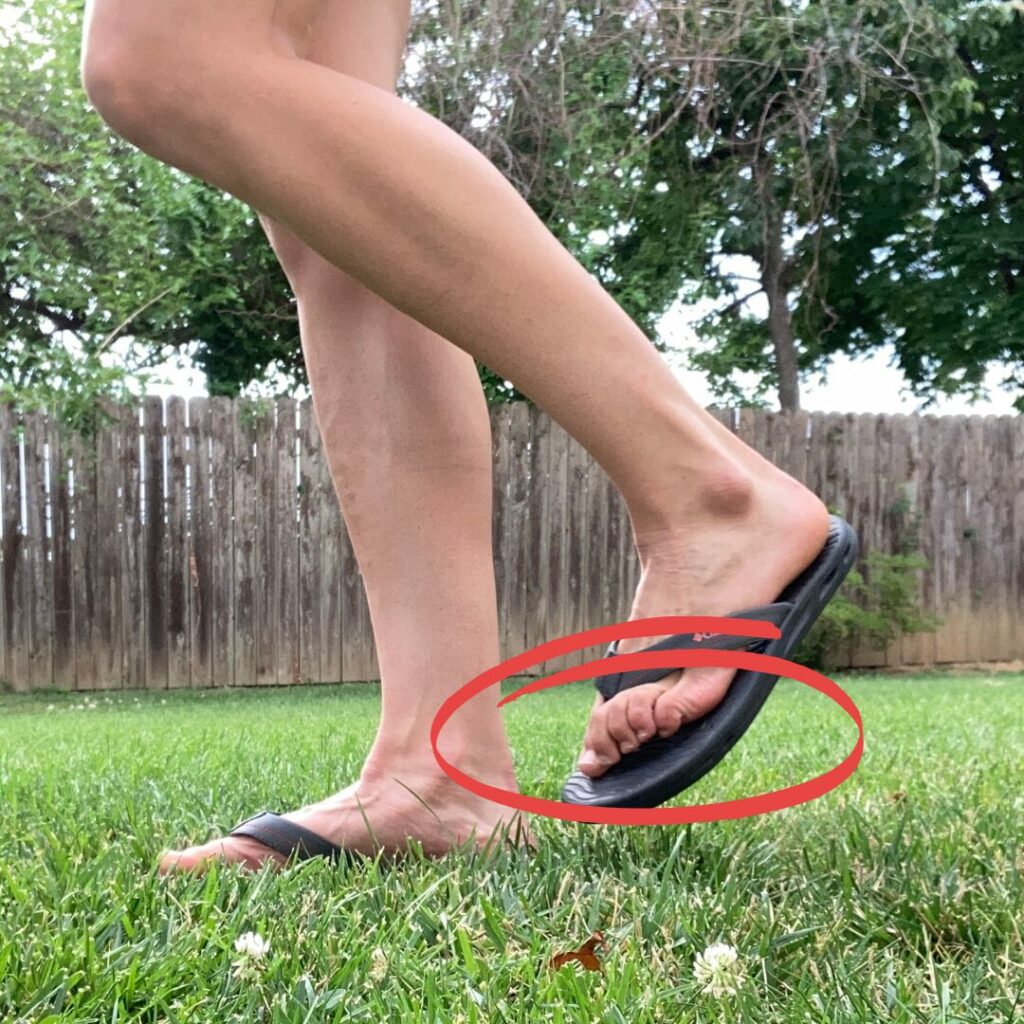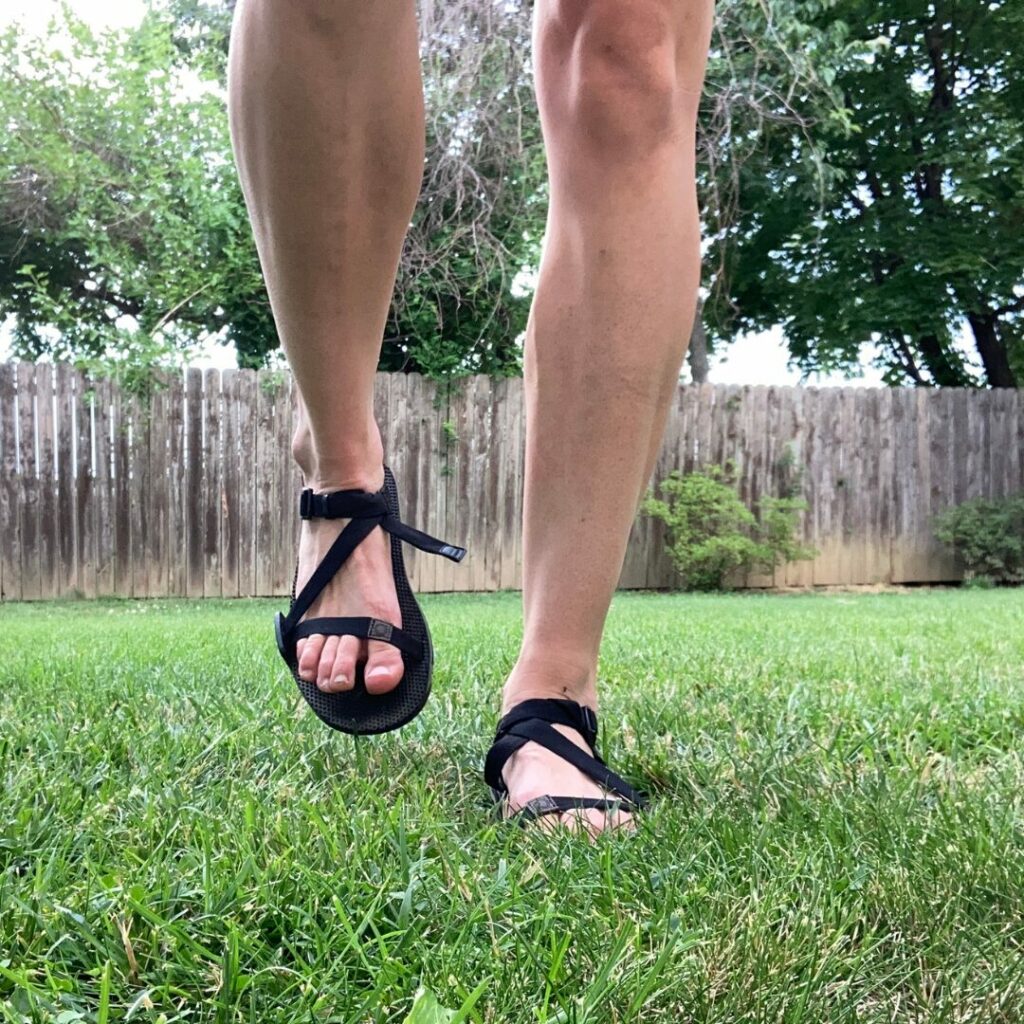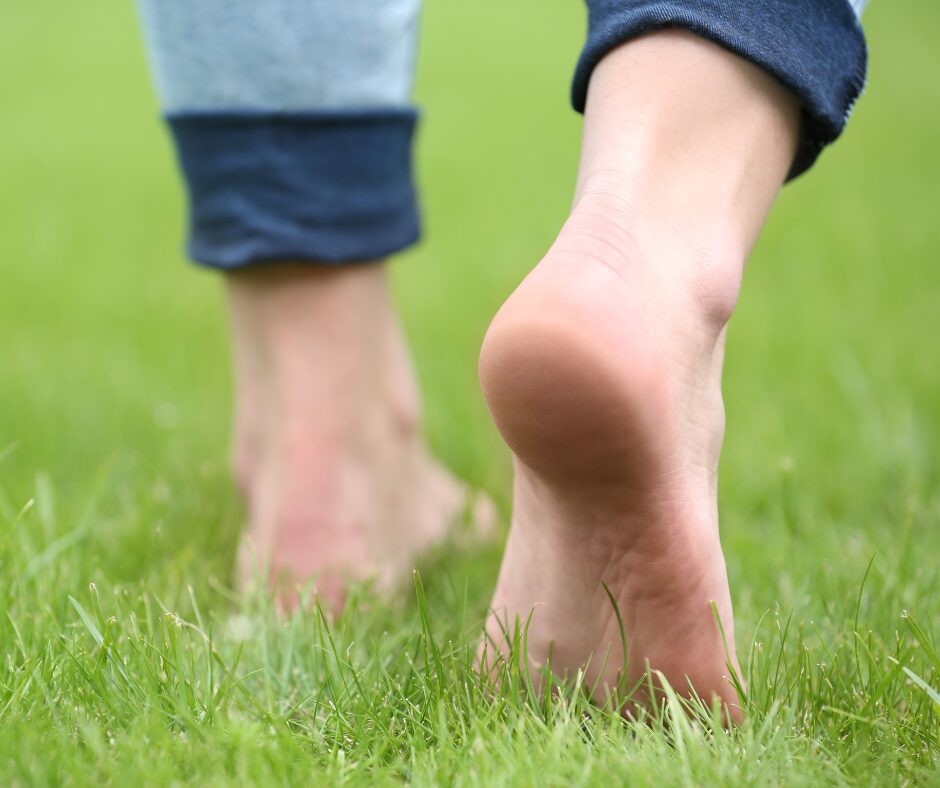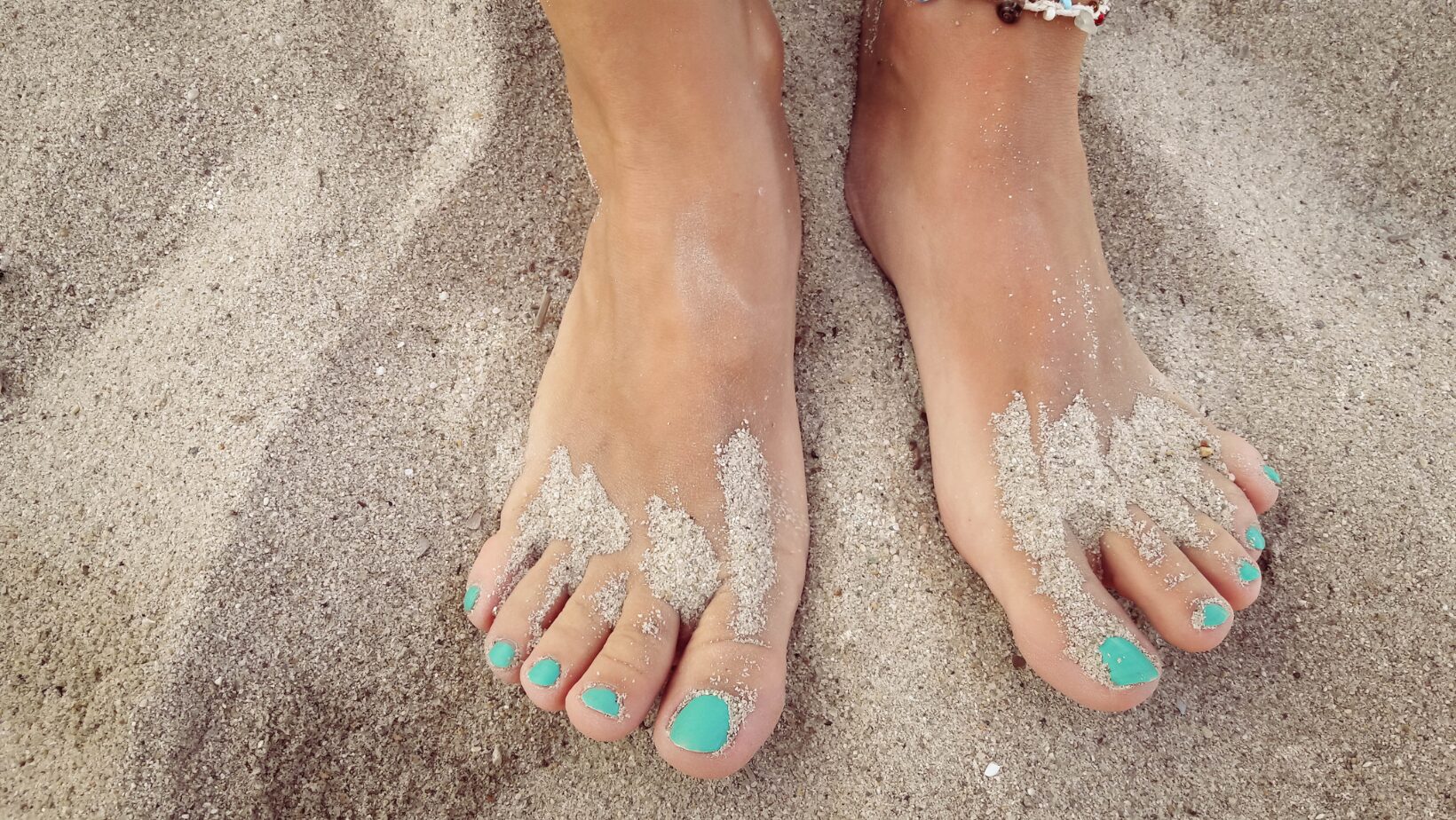I’m not here to rain on your parade, so this isn’t a post about NEVER wearing sandals, BUT this is a post about being smart when choosing your summer footwear. Learn how to avoid foot pain and other injuries by making smart choices when it comes to what you put on your feet.
The two biggest mistakes people make when transitioning to summer footwear:
- Too much, too soon
- Wearing flip-flops
Both of these mistakes can be easily avoided. When you go all winter wearing sneakers and boots, which typically have your heel slightly elevated and your arch slightly supported, it can be very stressful on the soft tissues of your foot and ankle to make a change to strappy flat shoes. Often, people will complain of Achilles or plantar fascia pain as soon as they start walking around in their flip-flops for the summer.
Flip-flops are the worst offenders. Because of how they stay on your feet, your toes often have to grab the sandal (see the picture below) as you swing your leg through the air. The gripping of the toes is what often causes injuries. This is aside from the fact that flip-flops are usually much less supportive than the shoes you would typically wear.
What can you do instead of Flip-FlOps?
You don’t have to abandon them altogether. I typically tell people to save the flip-flops for the quick walk to the beach or the quick walk in and out of the restaurant. Going to the boardwalk for the evening? Choose something more supportive, like a sneaker. If you’ve already adjusted to flatter shoes, a strappy sandal works great, as well! Some are more supportive than others. Chacos, for example, make a great strappy sandal.

My personal favorite summer strappy sandal is the Naboso Trail from Xero Shoes. It’s a combination of a barefoot shoe with my favorite sensory technology from Naboso. I also love Bedrock Sandals when I need a little extra support, but I still want my feet and toes to move freely. However, I’ve done a lot of work to get myself to tolerate a barefoot-style shoe, and I typically wear a similarly minimalistic shoe all winter.

The second way to avoid injuries is to avoid doing too much, too soon.
How to transition from shoes to summer shoes:
Once again, start by wearing your summer shoes just to walk to the beach and back or for a quick walk into the restaurant. Don’t ruin a vacation or a summer of training by wearing a totally different shoe for a night on the boardwalk. You’ll be lucky if you don’t have blisters and heel pain by the end of the night. Once you get used to the different shoes, you can increase your time as tolerated. I’d still avoid the flip-flop for anything more than a quick walk, though.
FINAL SUMMER TIP
Summer is a great time to get grounded. Our feet are our only physical connection between the Earth and our brains while we’re standing and walking. The more we put between the ground and our feet, the less sensory feedback we get. The sensory feedback we get from the ground can be great for many things, including cognition, mental health, emotions, breathing, posture, and stability. I always recommend getting barefoot when you can. Once again, build up your tolerance; natural surfaces like grass and wood are always best.

I hope this article got you thinking about getting your feet healthy! Schedule a discovery visit with me if you want some help getting started.

